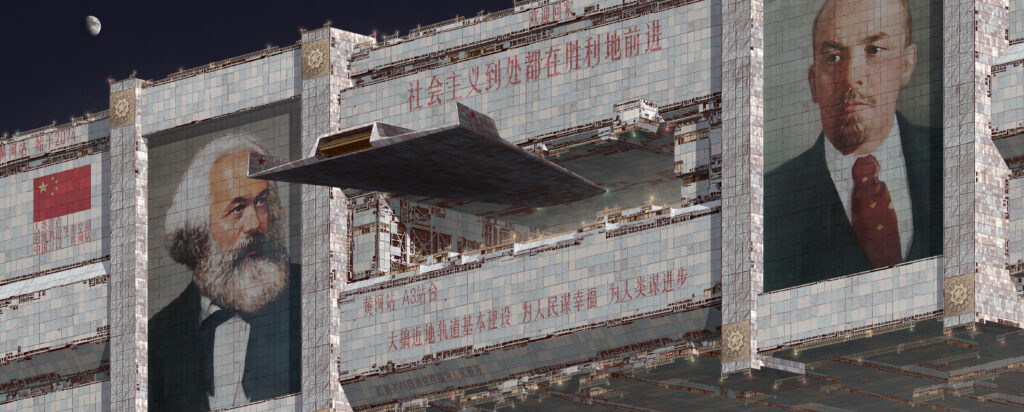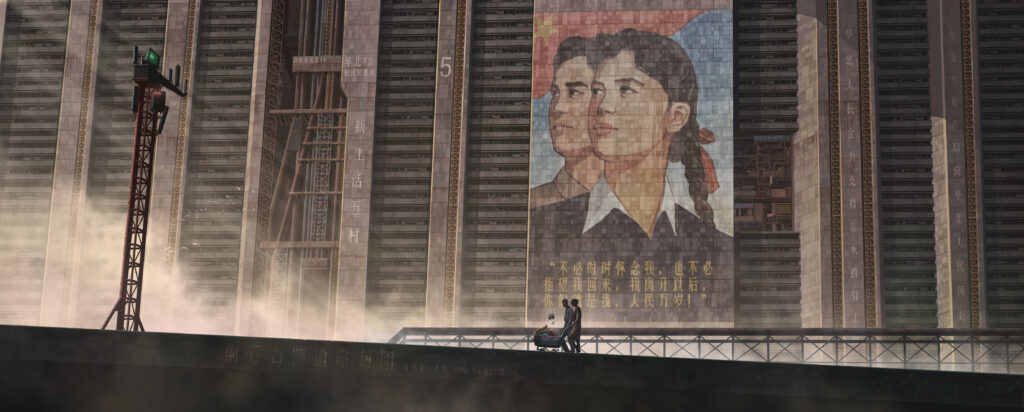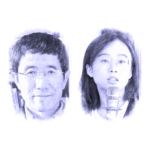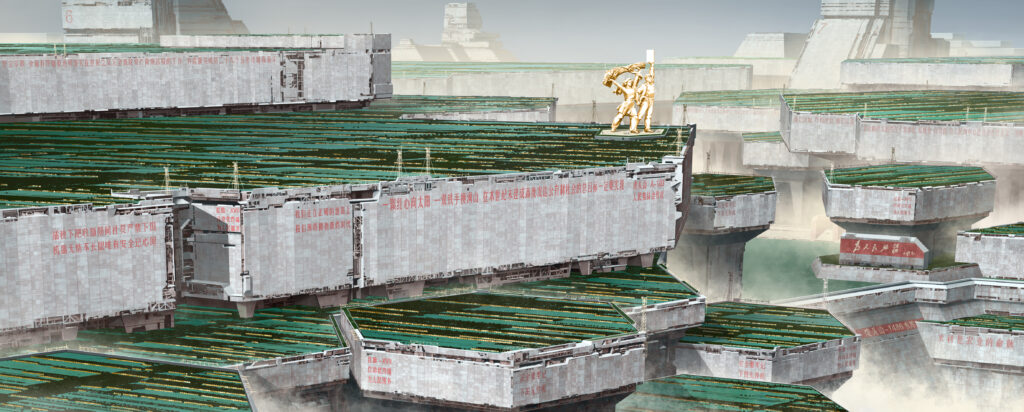Wenhua Zongheng: Quarterly Journal of Chinese Thought | VOL.1 No.2
China’s Path from Extreme Poverty to Socialist Modernisation

Socialism Is a Historical Process
‘Today, the concept of socialism is at the centre of fierce ideological battles’, writes the Longway Foundation (修远基金) in the first article in this issue of the international edition of Wenhua Zongheng (文化纵横). ‘These debates often remain at the level of ideas […] while ignoring the reality that socialism is a historical process that has advanced alongside industrialisation’.
In China, the history of industrialisation has been and remains inseparable from the building of socialism, throughout its many stages, advances, trials, and errors. In the final decades of the twentieth century, the global socialist movement waned, highlighted by the dissolution of the Soviet Union; during this time, China’s socialist system underwent a self-transformation through reform and opening-up, under the leadership of Deng Xiaoping (邓小平). At the time, observers across the political spectrum interpreted this new direction as the death knell of the socialist project in China and as the beginning of the country’s capitalist path. However, these initial assessments, by both those outside and inside the country, lacked the necessary information and the historical distance to evaluate the socialist character of China’s reforms.
Despite the social, economic, and industrial gains of the early socialist period under Mao Zedong (毛泽东), three decades after the revolution China remained a very poor country and most of the Chinese people still lived in extreme poverty. In this situation, Deng declared that, ‘poverty is not socialism, socialism is to eliminate poverty’, and attempted to chart a new course to address the country’s need to modernise and the people’s need for better lives. The re-introduction of private capital and integration of China into the international economic system was part of the effort to rapidly develop the country’s productive forces, strategically prioritising certain regions to ‘let those who get rich first bring others along’ (先富带后富, xiānfù dài hòufù). In the West, wittingly or unwittingly, this formulation has often been reduced to ‘let some get rich first’, omitting the second part of his statement that holds wealthier members of society responsible for ‘bring[ing] others along’ towards the goal of common prosperity. This reflects the poverty of information about China that exists outside of the country, an essential factor in the ideological battle over the concept of socialism.
At the end of 2020, just over four decades after Deng’s experiment began, China announced that it had successfully eradicated extreme poverty among its 1.4 billion people. This historic achievement came in the midst of the global Covid-19 pandemic, during which existing economic and social crises deepened around the world and millions of people, especially in the Global South, slipped back into extreme poverty. The eradication of extreme poverty in China was one of the two centenary goals that the Communist Party of China (CPC) had set, to be completed by the 100 year-anniversary of the party’s founding in 1921. During the last phase in this process, from 2013 to 2020, China embarked on a program of targeted poverty alleviation (精准扶贫, jīngzhǔn fúpín) initiated by President Xi Jinping (习近平), to lift the final 100 million Chinese people from extreme poverty. This adds to the over 700 million people who exited poverty in the country since the reform and opening up period began; since 1978, China has accounted for over 70 percent of the global reduction in poverty. How should we understand this remarkable achievement, to which processes and actors should we give due credit, and on what basis should we make our assessment?
Despite China’s incredible economic gains in this period, it would be incomplete and incorrect to solely credit economic reform and the re-introduction of market forces for the country’s elimination of extreme poverty. This issue, entitled ‘China’s Path from Extreme Poverty to Socialist Modernisation’, features three articles that closely examine China’s centenary battle against poverty and situate it within the country’s historical experience of socialist construction.
In the first article, ‘Socialism 3.0: The Practice and Prospects of Socialism in China’, the Longway Foundation contextualises the current era of Chinese socialism and the battle against poverty within the CPC’s historical pursuit of modernisation and the twin goals of industrialisation and equality. The authors argue that the party’s approach to these interconnected and, at times, contradictory aims has evolved over three distinct phases. From 1949 to 1976, the ‘Socialism 1.0’ era of Mao Zedong established public ownership of the means of production, maintained social equality, and achieved basic industrialisation, but encountered limitations in economic development. This was followed by the ‘Socialism 2.0’ era of Deng Xiaoping which began with the introduction of the market economy in 1978 and achieved enormous economic and industrial advances, but led to a sharp increase in inequality, greater separation between workers and the means of production, and ‘laid the groundwork for a serious crisis’. Finally, there is the contemporary period, in which China must develop a ‘Socialism 3.0’ that builds upon the previous eras and addresses their shortcomings, by advancing working-class interests and combating inequality.
Indeed, the eighteenth National Congress of the CPC in 2012 marked a new era in China’s socialist path, as the party elevated poverty alleviation efforts to the central task of the party and society. In the second article, ‘The Battle Against Poverty: An Alternative Revolutionary Practice in China’s Post-Revolutionary Era’, Li Xiaoyun (李小云) and Yang Chengxue (杨程雪) examine the party’s ‘battle against poverty’ (扶贫攻坚, fúpín gōngjiān), which they contend represents ‘a return of sorts to its historic revolutionary agenda’. The authors trace the poverty alleviation policies of today to the early practices of the communist movement in China, particularly the party’s governance in the revolutionary base areas during the 1930s and 1940s. Beyond improving people’s livelihoods, the authors argue that the battle against poverty has had a broader political and economic impact, re-establishing the political authority of the CPC and rebuilding social consensus in the country. Ultimately, ‘[t]his reflects a new stage of the CPC’s governance’, Li and Yang conclude, characterised by the party ‘promoting social justice to fully realise the country’s modernisation’. This new stage of governance aims to move the country towards the CPC’s second centenary goal of building a modern socialist society by 2049, the 100-year anniversary of the Chinese revolution.
Advancing development and social welfare in rural areas is central to these efforts. To this end, the CPC launched its targeted poverty alleviation program in 2013 to eradicate extreme poverty in China. In the third article, ‘How Targeted Poverty Alleviation Has Changed the Structure of Rural Governance in China’, Wang Xiaoyi (王晓毅) looks at how this program achieved its goal by experimenting with novel practices while borrowing from the historic campaign-style governance of the Mao Zedong era, characterised by the mobilisation of huge amounts of human and material resources to rapidly complete large-scale tasks. During the reform and opening up period, due to the development of the market economy, rural areas were hollowed out with mass migration to the cities, village-level organisations weakened, and the party and the state became detached from the grassroots, resulting in diminished access to public services in impoverished areas. Along with meeting the immediate materials needs of the people in the countryside, Wang details how targeted poverty alleviation played an important role in rebuilding village-level organisations, reconnecting the party with the rural base – including sending of over three million party cadres to work in impoverished areas – and strengthening democratic processes and self-governance at the grassroots level. What remains to be seen is whether these significant experiments and innovations of the poverty alleviation campaign can be translated into institutional changes and effect long-term changes in rural governance.
In his report to the twentieth National Congress of the CPC in November 2022, Xi affirmed that ‘Chinese modernisation is socialist modernisation pursued under the leadership of the Communist Party of China’. He highlighted five key characteristics of China’s path to modernisation: the modernisation of a huge population, common prosperity for all, material and cultural-ethical advancement, harmony between humanity and nature, and peaceful development. Xi continued in his report, ‘In pursuing modernisation, China will not tread the old path of war, colonisation, and plunder taken by some countries. That brutal and blood-stained path of enrichment at the expense of others caused great suffering for the people of developing countries. We will stand firmly on the right side of history and on the side of human progress’. As with socialism, the struggle to define modernisation, and to wrest this concept from the hegemony of the West, is a key ideological battle in our time.
There is little doubt that China’s path to socialist modernisation, of which the fight against poverty plays a central role, holds global significance. However, it is not a singular model to be replicated by or imposed onto other countries with their own histories and conditions, but it does represent an alternative path to Western capitalist development and the possibility for peoples and countries of the Global South to pursue their own path to modernisation – and perhaps to socialism – that firmly defends human dignity and national sovereignty.


Socialism 3.0: The Practice and Prospects of Socialism in China
Longway Foundation


The Battle Against Poverty: An Alternative Revolutionary Practice in China’s Post-Revolutionary Era
Li Xiaoyun
Yang Chengxue


How Targeted Poverty Alleviation Has Changed the Structure of Rural Governance in China
Wang Xiaoyi





